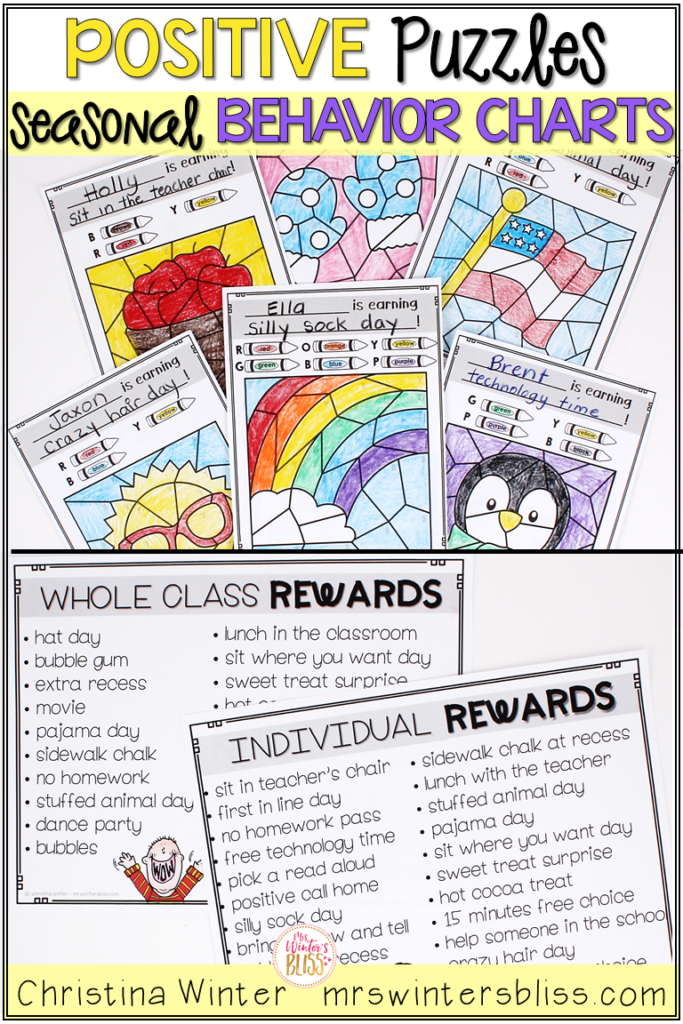
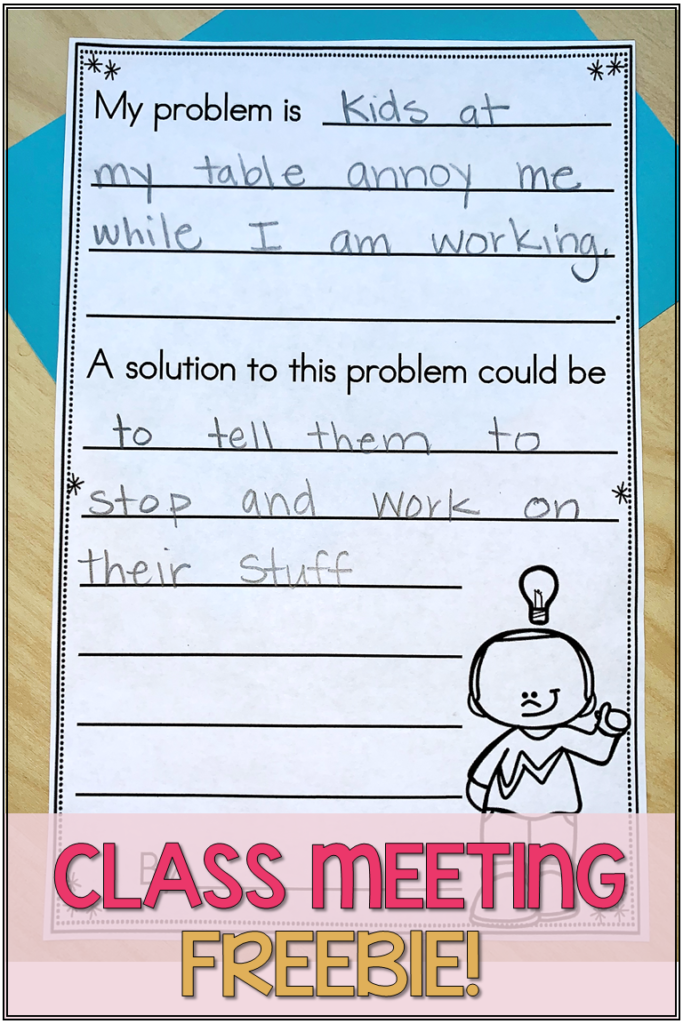
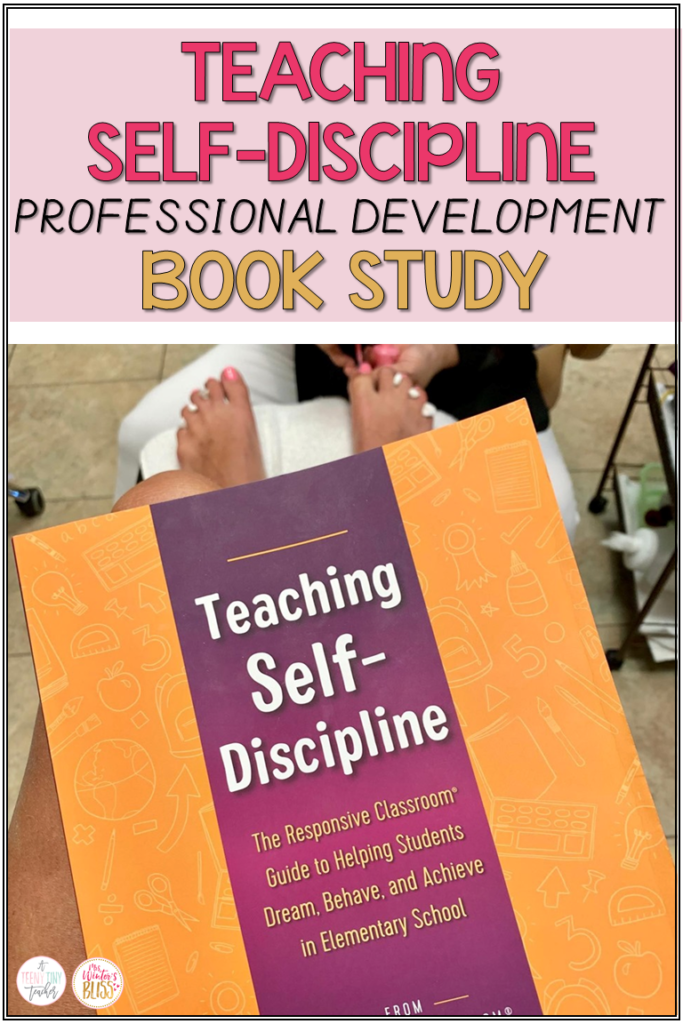

Chapter 4 of Teaching Self-Discipline focuses on student problem behavior and strategies to help those who are struggling with ongoing behavior challenges.
Hi Friend!
This week we are moving on to Chapter 4 which means we are more than half-way through our book study on Teaching Self-Discipline. Time flies when you’re having fun! 😁 Fortunately, you’ve still got plenty of summertime left to enjoy!
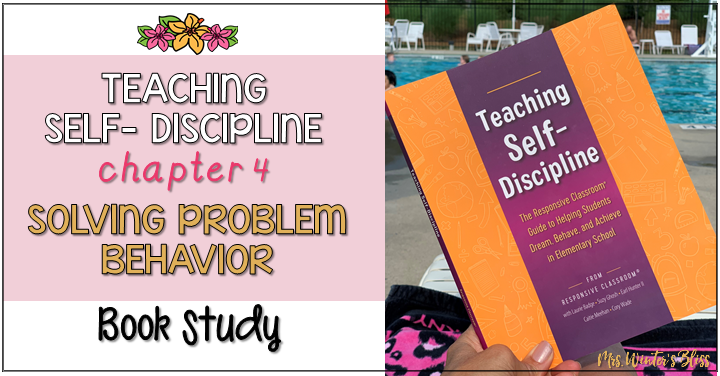
If you’re just joining us, catch yourself up by taking a look at the posts for Chapters 1, 2 & 3.
The first two weeks we discussed creating safe and predictable learning environments and investing students in the class rules. Chapter 3 moved our discussion to responding to misbehavior using logical consequences and this week we’re talking about solving more problematic behavior.
Chapter 4 begins by reminding us that positive behavior can be thought of as another subject to we must teach, like reading or math. And just as some students need additional support to be successful at reading, there will be some students who need extra help and time to be able to follow the rules on a consistent basis. So while chapter 3 focused on using logical consequences for common misbehaviors, chapter 4 focuses on problem behavior which “refers to an ongoing pattern in which a student continues to struggle with a particular behavior challenge.”
Checking the Foundations of Good Behavior
Before you jump ahead and assume your students need something more than logical consequences, take some time to think closely about how things are going in your classroom. Do you need to go back to the foundations of good behavior that you worked to lay at the start of the year?
Think back to Chapters 1 and 2 and how we establish rules and routines. Remember these things require time and repetition. It may be half-way through the year and your students need a refresher of the rules and why they are important. Try some more interactive modeling and/or role playing to help you deal with specific behavior issues that multiple students are exhibiting.
The text also reminds us to take time to assess yourself and the language you are using. You’ll want to take a look back at the Chapter 1 post for a refresher on effective teacher language. Also consider how you are using logical consequences. Are you using them consistently and at the first signs of misbehavior? If not, that may be part of the problem!
I love the final reminder to consider the kid’s basic needs. It seems like such a simple solution but sadly, it is often overlooked! Maybe problems arise because they are hungry, so think about if you can change or add a snack time? Maybe they need to get up and move a bit more! I know my students require a lot of movement and so we take breaks to move all throughout the day. (I shared some of my favorite brain breaks here!)
We are reminded to look for patterns about students’ physical, social and developmental needs, because supporting them more effectively may be the reason for the misbehavior.
But if you’ve thought all of those things through and behavior still isn’t improving, it may be time to consider using one of the three strategies discussed in Chapter 4: Problem Solving Conferences, Individual Written Agreements, and Class Meetings.
Problem Solving Conferences
Problem solving conferences are to be used with an individual student who is exhibiting an ongoing problem behavior. It allows teachers and students to work together to come up with the solution. It is private and focuses on one specific problem behavior. Together, the teacher and student discuss possible causes and brainstorm possible solutions to the problem. Students have a voice which gives you greater insight into their behavior and unique needs.
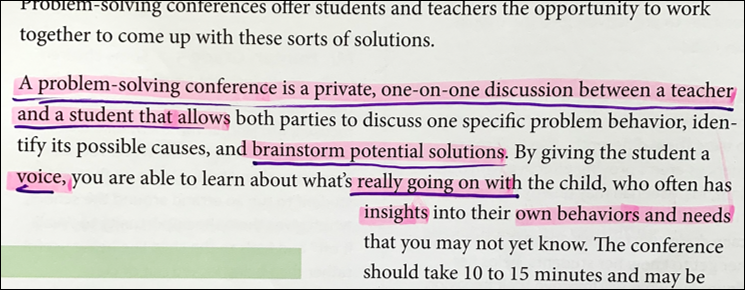
The conference does take a chunk of time (10 to 15 minutes) so you’ll need to schedule a special time for it. While you’ll want to plan out the conference a bit by brainstorming some possible causes and solutions, we are reminded to keep our teacher talk to a minimum and allow students to express their feelings and know we value their voice.
The text clearly outlines ten steps for holding an effective problem-solving conference. While I won’t outline them all here, I’ll share some of the key points that stood out to me.
- Be clear that you’re only going to talk about one specific thing. Keep it specific and brief so the student clearly understands the issue.
- If student doesn’t agree it’s a problem or aren’t willing to collaborate you, this strategy isn’t appropriate. If you find yourself in that situation, you need to be extra clear about the rules and expectations, push more logical consequences and/or work to build a stronger relationship. They’ve got to be on your side and feel you are on the same team! I talk more about the importance of building strong relationships in this post.
- Follow up! I love the suggestion to set the date for your check-in meeting during the initial conference. I think all too often, once we see the behavior begin to improve we probably move on. Be sure to check in on how things are going and reinforce any progress the student has made. Students really need us to continually reinforce their efforts and recognize their successes.
Individual Written Agreements
Individual written agreements are appropriate for students who need a very structured support to stop a nonproductive behavior. The teacher and student agree on a behavior goal and choose a way to document their success in meeting it. Sometimes they may also agree on a reward for meeting it.
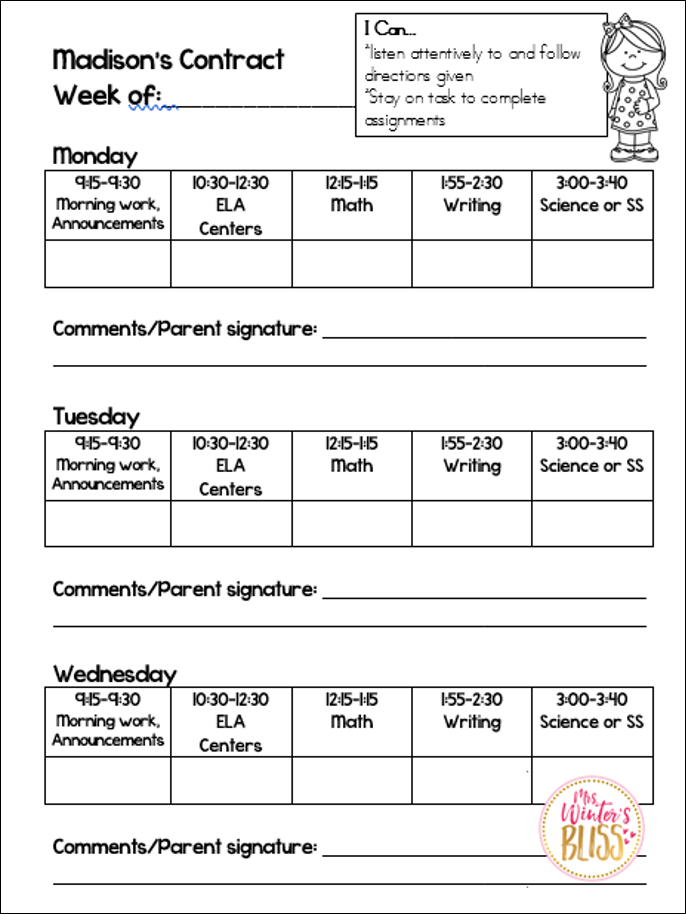
These agreements take a lot of time and may rely on extrinsic rewards, so you only want to use them when you’ve exhausted the other techniques. They require frequent reminders and encouragement, so you have to really consider whether it is something you have time to commit to and follow through with.
The text encourages us to reach out to parents before creating an individual written contract. Their support is so valuable and they may provide helpful insights. Hopefully, parents will be supportive of your efforts and willing to help. It’s likely that they are having similar problems at home and will be appreciative of your help!
Things to consider when using individual written agreements include making sure your goal is clear and measurable. I like the reminder to strive for progress rather than perfection!
Also, a student’s progress needs to be tracked in a way that is visible to them. Another option, Positive Puzzles behavior charts are a way for students to quickly see how they are doing to meet the goal they have set for themselves.
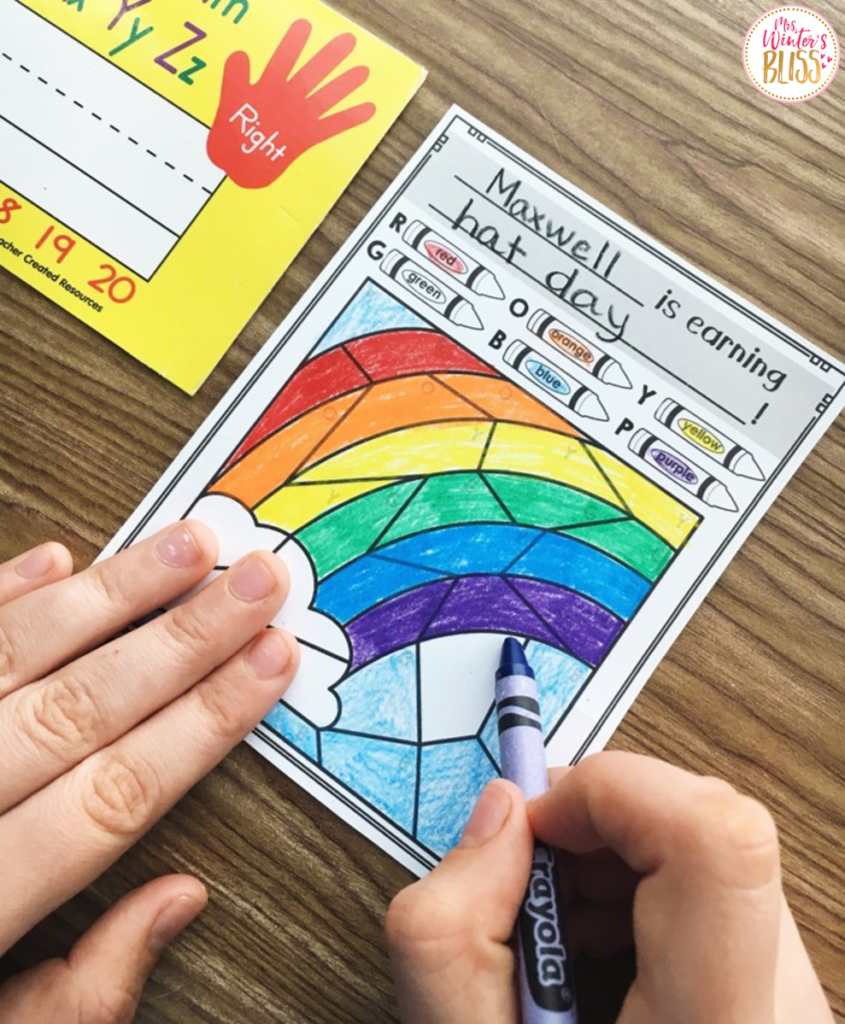
-
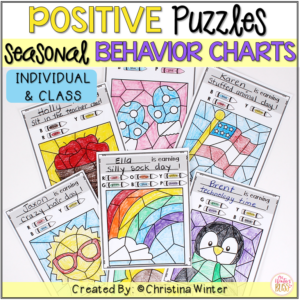 Positive Behavior Management – Individual & ClassEarn 0 Reward Points
Positive Behavior Management – Individual & ClassEarn 0 Reward Points
$7.00Rated 5.00 out of 5 based on 1 customer rating
Remember no matter which written agreement you use, it’s essential you track throughout the day and also offer verbal reinforcement by telling the student what you have noticed. This consistent feedback will help the student know they are making progress and motivate them to stay on task.
Finally, if you agree to give the student a reward, make sure it is non-tangible. Avoid candy, pencils, toys, snacks, etc. Instead offer things like extra reading time, lunch with the teacher, or a special classroom job.

What non-tangible rewards do your students love? And remember, if you do use a reward, try to wean the student off of it. Ideally, we want our students to be internally motivated!
Class Meetings
This is a strategy you can rely on when a large number of students are exhibiting problem behavior, when it’s clear the rules you agreed upon are not working, when the problem affects the whole class and importantly, when you are open to student input!
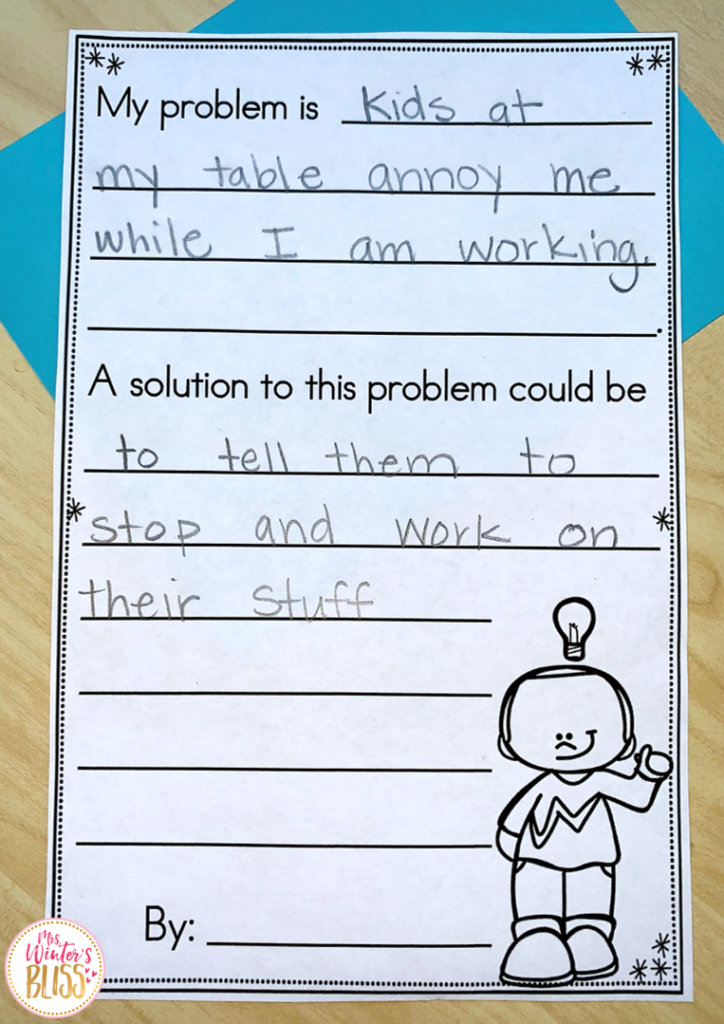
I created this freebie that can be used to help students convey the problem they are struggling with and a possible solution to be discussed at a class meeting.
I like that this printable allows for students to be anonymous if they want and they are able to come up with a solution that makes sense to them to bring to the class meeting discussion.
Download this class meeting freebie HERE
The text outlines nine steps for holding a class meeting. Again, I won’t list all nine here but let me share a few things that stood out to me as being important to remember….
- Plan for the meeting to take about 30 minutes. These things take time, but it is time well-used! Don’t do it during recess or any other special time because that might make the meeting seem like a punishment.
- Be sure to connect the problem to the class rules and then also to their personal goals. Take a look back at Chapter 2 for the importance of connecting their goals to the classroom rules.
- I like the idea of going around in a circle and giving each student the chance to share their thoughts and feelings about the problem and then again to share a possible solution. This keeps certain students from dominating the conversation and ensuring every voice is heard, if they choose to share.
- When choosing a solution, all students need to at least be able to live with the consensus. If there are any students who vote with a “thumbs down” then the class needs to find a way to compromise or choose a different solution.
- As with all things, FOLLOW-UP! Reinforce and recognize the effort you see! It may take more than one class meeting to solve a persistent issue.
Talking to Parents About Problem Behavior
Talking to parents about problem behavior isn’t always easy. While we all know it is so important, I know many teachers find it intimidating and nerve-wracking. Do you?
Chapter 4 wraps up by reminding us of the importance of communicating with parents regarding behavior and offers tips to do so.
We are reminded to communicate early when a behavior problem arises, to stay focused on the facts and remain objective. I like that the text reminds us to really have a clear purpose when contacting parents.
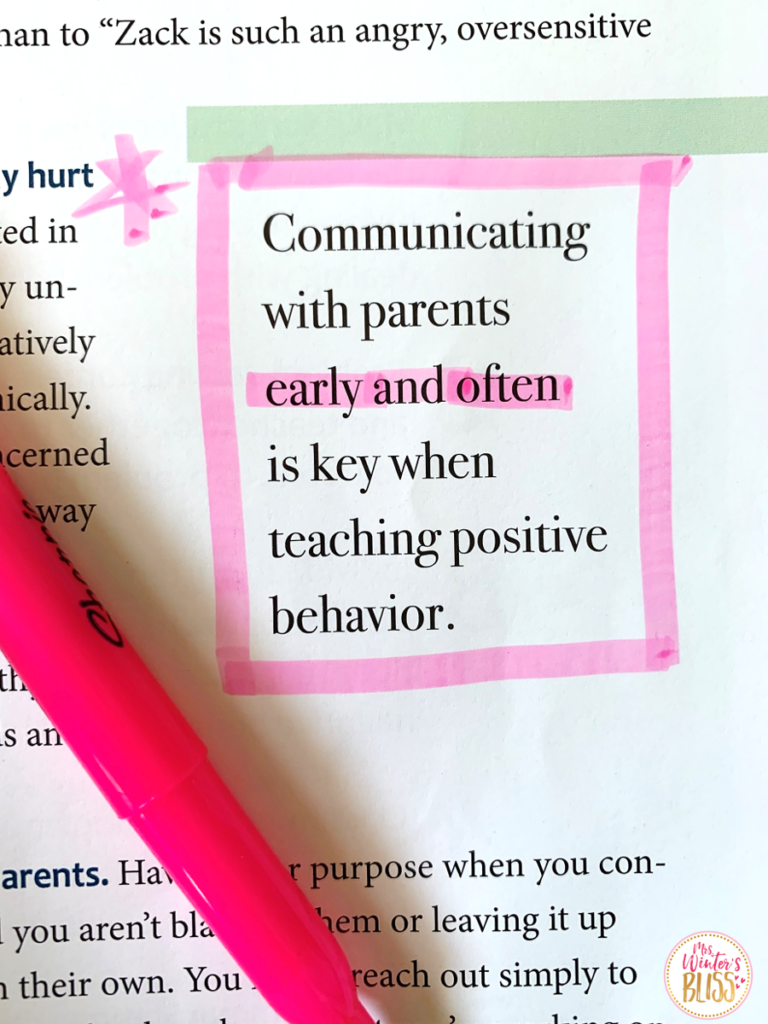
You don’t want parents to feel like you are blaming them or asking them to solve the problem for you. The purpose may be to simply inform them of what is going on, to seek their insight or ask them to help you carry out strategy you are working on with their child. Whatever the reason, have it set in your mind.
I find the tips the text provides to be encouraging and empowering. For more about building relationships with parents check out this post!
What was your big takeaway from this chapter? Are there challenges you foresee in implementing these strategies? Do you feel they’d be effective in your classroom? I’d love to hear your thoughts! Feel free to share them below!
Next week is already the final week of our book study! We’ll wrap up with a discussion on Chapter 5: Managing the Effects of Toxic Stress. It’s such an important topic to discuss and I hope you’ll be a part of it!











